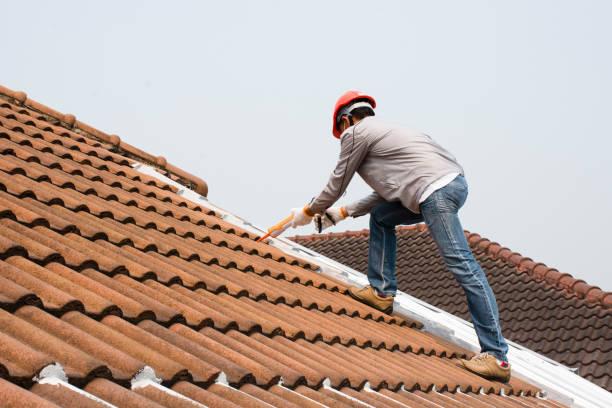
Your roof is a critical component of your home, providing protection from the elements and maintaining the structural integrity of the building. Over time, exposure to various weather conditions can take a toll on your roof, leading to wear and tear that may require restoration. Roof restoration is a proactive approach to extend the life of your roof, prevent leaks, and avoid costly roof repairs or replacements. In this blog post, we will explore the common signs that indicate your roof needs restoration. By recognizing these signs early on, you can take timely action and save yourself from potential headaches and expenses down the road.
Age of the Roof:
One of the primary factors that determine the need for roof restoration is the age of your roof. Most roofs have a limited lifespan, depending on the materials used. Asphalt shingles, for instance, typically last between 20 to 25 years, while metal roofs can last up to 50 years. If your roof is approaching or has exceeded its expected lifespan, it’s essential to consider restoration. Even if your roof looks fine from the ground, hidden issues may have developed that require attention.
Damaged Shingles:
Visually inspect your roof for damaged or missing shingles regularly. Shingles that are cracked, curled, blistered, or have lifted edges are indicators of weathering and may no longer provide adequate protection against water infiltration. Damaged shingles can lead to leaks and further deterioration of the roof structure, making restoration necessary to avoid more extensive damage.
Water Leaks and Stains:
Water leaks are among the most apparent signs that your roof needs restoration. Look for water stains on your ceiling or walls, especially after heavy rainfall or snowfall. Leaks can originate from damaged or missing shingles, worn-out flashing, or compromised roofing materials. Addressing leaks promptly is crucial to prevent water damage to your home’s interior and mold growth.
Sagging Roof:
A sagging roof is a severe issue that demands immediate attention. It typically indicates structural damage and could be a sign of rotting roof decking or compromised support beams. If you notice any areas of your roof sagging, seek professional assistance immediately, as neglecting this issue can lead to roof collapse.
Granule Loss from Shingles:
Asphalt shingles often lose granules over time, which help protect the roof from harmful UV rays and provide fire resistance. If you find an excessive amount of granules in your gutters or downspouts or notice bald spots on your shingles, it’s a sign of aging and potential water damage. A professional inspection can determine if restoration is necessary to protect your roof from further deterioration.
Mold or Moss Growth:
The growth of mold, moss, or algae on your roof not only affects its appearance but can also lead to significant damage. These organisms retain moisture, which can lead to shingle decay and wood rot. Roof restoration will not only remove the growth but also address the underlying issues and prevent future infestations.
Cracked or Damaged Flashing:
Flashing is the metal or plastic material installed around chimneys, vents, and skylights to prevent water from seeping into vulnerable areas. Cracks, gaps, or damage to the flashing can allow water penetration, leading to leaks and compromising your roof’s integrity. Addressing damaged flashing during restoration is crucial to maintain a watertight roofing system.
High Energy Bills:
If you’ve noticed a sudden increase in your energy bills, it could be a result of a poorly insulated or damaged roof. An inefficient roof allows air to escape, forcing your HVAC system to work harder to maintain a comfortable temperature inside your home. Roof restoration can include improving insulation, reducing energy costs, and enhancing the overall comfort of your living space.
Sunlight Penetration:
During the day, go into your attic and look for any signs of sunlight filtering through the roof. Sunlight penetration indicates gaps or holes in your roofing material, which can lead to water leaks and other issues. Promptly address any areas where sunlight is visible to prevent further damage.
Conclusion:
Your roof plays a crucial role in protecting your home, and recognizing the signs that it needs restoration is essential to maintain its longevity and structural integrity. Regular inspections, prompt repairs, and professional roof restoration when needed will help you avoid costly replacements and keep your home safe and secure for years to come. If you’ve noticed any of the signs mentioned in this blog post, don’t hesitate to consult a roofing professional to assess the condition of your roof and recommend the best course of action for restoration. Taking proactive steps now can save you from more significant expenses and headaches in the future.

Focus on thorough research, organize content logically, and use credible sources. Proofreading and adhering to guidelines enhance the quality and impact of your work.(https://domyassignments.uk/do-my-coursework)